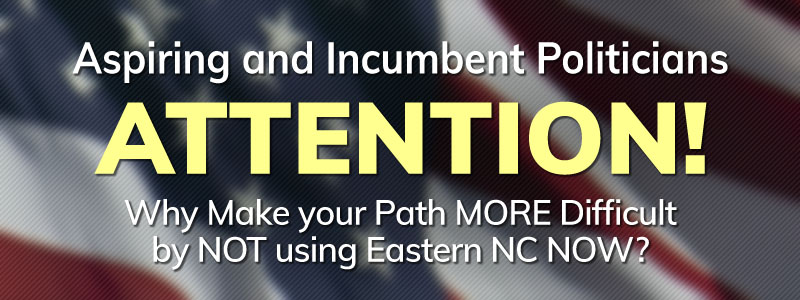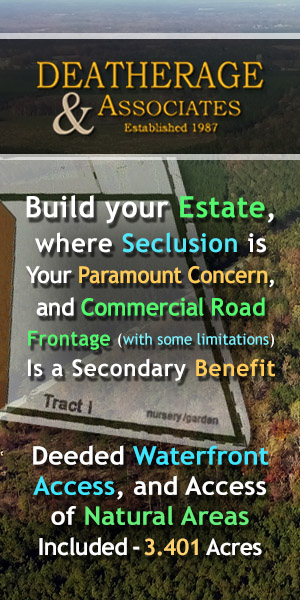Publisher's note: This post, by Andy Jackson, was originally published in Civitas's online edition.
- Over the past four years, the number of registered Republicans increased by a little over 100,000, while the number of registered Democrats decreased by a little over 100,000
- Democrats have increased their numbers in urban counties (especially Mecklenburg and Wake), while Republicans have increased their numbers more evenly across the state
- Registration patterns of new unaffiliated voters suggest that their overall voting patterns will be like those of partisan voters
With the 2020 election upon us, it is natural to wonder how North Carolina's political landscape has changed since the start of the 2016 election. To that end, I will review changes in voter registration over that time using Civitas'
Voter Registration Changes page at Carolina Elections.
Statewide: A few more Republicans and a lot more unaffiliated voters
Over the period from mid-January 2016 to mid-January 2020, North Carolina added nearly a half-million registered voters (461, 773). The net result of all those changes is that the state is slightly more Republican than it was four years ago. Today, there are 104,311 more registered Republicans in North Carolina than there were in January of 2016 (an increase of 5.3 percent). On the other hand, the number of Democratic registrations statewide actually declined by 113,157 (a decrease of 4.3 percent). Much of that decline is likely due to people who registered to vote for President Barack Obama but were dropped from the voter rolls because they have never voted or had any contact with their county board of elections since. Altogether, potential voting strength has shifted in favor of Republicans by 217,468 registrations over the past four years. However, Democrats still outnumber Republicans, 2,517,343 registrations to 2,065,181.
Where the parties are gaining ground and where they are losing ground
Perhaps the more interesting question on voter registration changes over the past four years is not how much, but where. The answer to that question shows that North Carolina's
urban-rural divide is still growing and that Republicans continue to gain in outer suburban counties (see figure 1 to examine individual counties).
Democratic registration increased in only 10 counties while declining in the other 90. However, their growth in the state's two largest counties, Mecklenburg and Wake, has been huge. 28,326 Democrats have been added to the voter rolls in Mecklenburg while 23,602 new Democratic registrants have been added in Wake. The next highest county for Democratic growth was Durham with 3,903 more Democratic registrations. The other counties that saw increased Democratic registration were urban counties (Forsyth, Guilford), those with suburbs of Raleigh or Charlotte (Cabarrus, Chatham, Johnston) and progressive mountain bastions (Buncombe, Watauga).
Democrat's fortunes declined in most of the state, particularly in the southeastern part of the state and in the western Piedmont. Fifty-eight counties saw a four-digit decline in the number of registered Democrats with the greatest declines in Robeson (7,323), Catawba (4,622), and Columbus (4,340).
Republicans have gained registrations more evenly across the state. Eighty-seven counties had a net increase in Republican registrations while 13 had a net decline.
Two of the counties with the highest Republican growth, Brunswick (8,438) and Onslow (5,369) are on the coast. In the Research Triangle region, Wake (3,991), Johnston (7,276) and Harnett (3,562) counties also had strong Republican growth, as did Davidson County (3,918) in the Triad area. The rest of the top 10 counties for Republican growth all border Mecklenburg County: Union (4,322), Iredell (4,270), Lincoln (3,991), and Gaston (3,365).
What changes in voter registration patterns mean for one metro area
Examining the
Charlotte-Concord-Gastonia, NC-SC Metropolitan Statistical Area is revealing; the total increase in Democratic and Republican registrations is very close with a slight Republican edge (see table 1 for details). The story of voter registration changes in the Charlotte metro area is one of shifting party strength within the region rather than the emerging dominance of one party over the other. That is similar to the
findings for the Raleigh-Durham-Chapel Hill, NC combined statistical area I published last year.
So, what about those independents?
The biggest change since January of 2016 has been the increase in the number of unaffiliated registrations. As of January 2020, the number of unaffiliated registrations increased by 458,412 registrations, bringing the total number of unaffiliated registrations to 2,276,082. The number of unaffiliated registrations overtook the number of registered Republicans in September of 2017 and, if current trends hold, will overtake the number of registered Democrats sometime in 2021. That raises the question of how we expect all those unaffiliated registrants to behave.
There are a
couple of theories about why people register as unaffiliated. One holds that they tend to behave like normal partisans but do not register as a party member due to their dislike of the current state of politics or simply as part of a general trend of Americans
not joining organizations. This would suggest that the voting behavior of unaffiliated voters would be like those of the partisans around them, with independents in more progressive areas tending to vote Democratic and those in more conservative areas tending to vote Republican. The other theory is that people declare themselves independent in order to avoid the social stigma of being a member of the minority party in their local area. Both of those theories suggest a relationship between geography the voting patterns of unaffiliated voters.
Of the net gain of 458,412 unaffiliated registrations, nearly half (224,611) came in the eleven counties where there was a net increase in Democratic registrations compared to Republicans while the 233,801 came in the eighty-nine counties that had a net increase of Republican registrations compared to Democrats. While a crude measure, the relatively even distribution of new unaffiliated registrations across the state over the past four years suggests that the rise in the number of independents in North Carolina is a political wash.
The bottom line
Changes in voter registration since January of 2016 suggest that Republicans have an advantage compared to four years ago, but that advantage is small and could be overwhelmed by other factors in the general election this fall.
If you need to register or update your registration, here are
instructions from the NC State Board of Elections.























